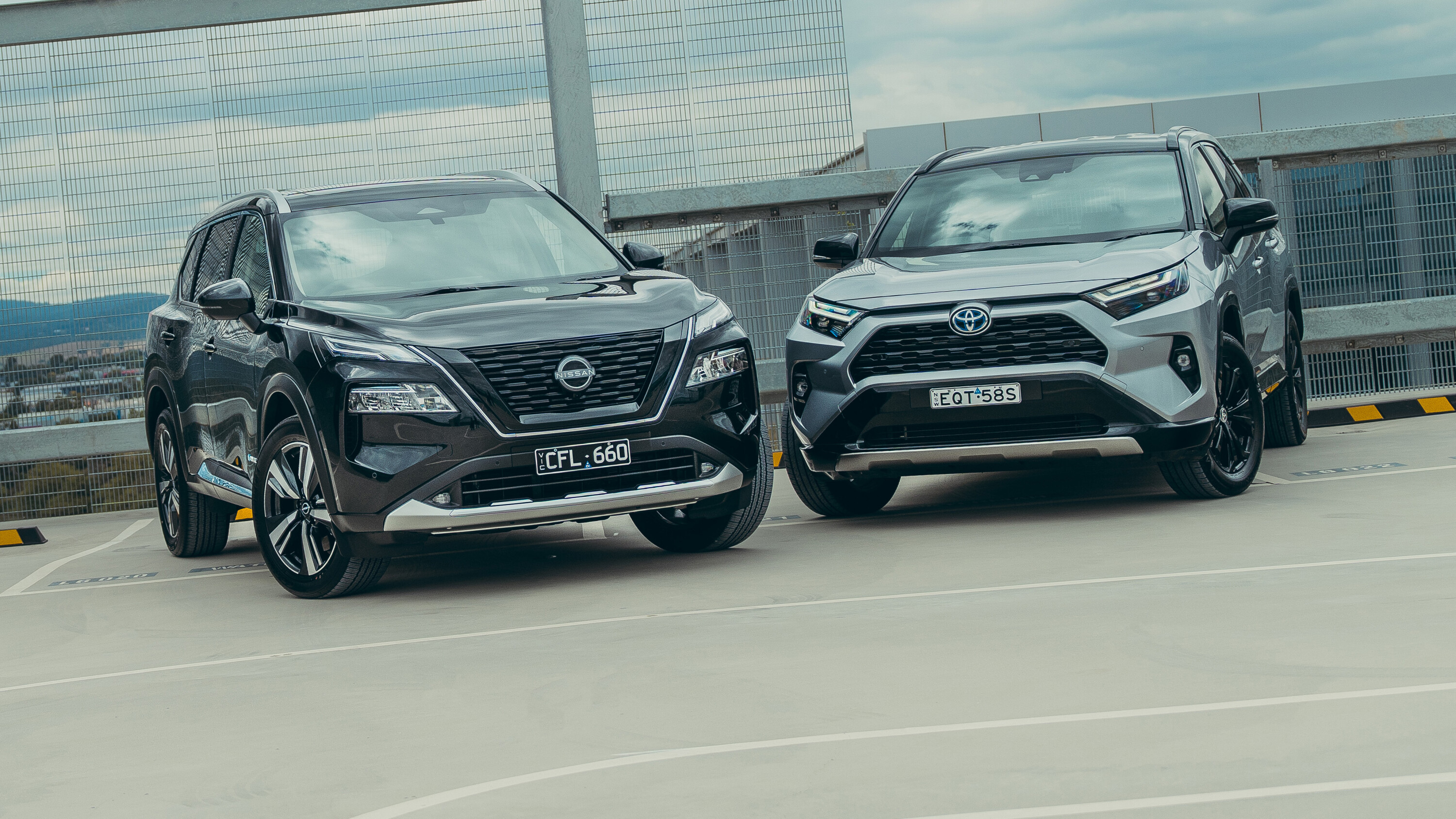
Things we like
- X-TRAIL: Lovely interior, punchy acceleration, refinement, clever rear seats
- RAV4: Still the hybrid efficiency king, excellent dynamics, cheap to service
Not so much
- X-TRAIL: could be more efficient, running costs, imperfect ride quality
- RAV4: Basic interior, lower refinement, and... the wait time is how long?
Toyota RAV4 XSE Hybrid v Nissan X-Trail Ti E-Power hybrid
Australia loves a good rivalry: NSW versus Queensland, “parma” versus “parmi”, even Phillip Lowe versus rampant inflation.
For years, in the car world, it was Ford versus Holden – but as their Australian factories disappeared, new rivalries have rushed in to fill the vacuum. One of them is Nissan versus Toyota, and swinging away in the shadow of Patrol versus LandCruiser is RAV4 versus X-Trail.
Toyota practically invented the compact crossover when it launched the RAV4 in Japan in 1993, and in the year 2000, Nissan unleashed the X-Trail as a snowboard-lugging, mountain-bike-chasing small SUV rival.
More than 20 years later, however, the RAV4 is the tearaway sales champion – basically the new Holden Commodore as Australia’s most popular passenger vehicle (that isn’t a ute).
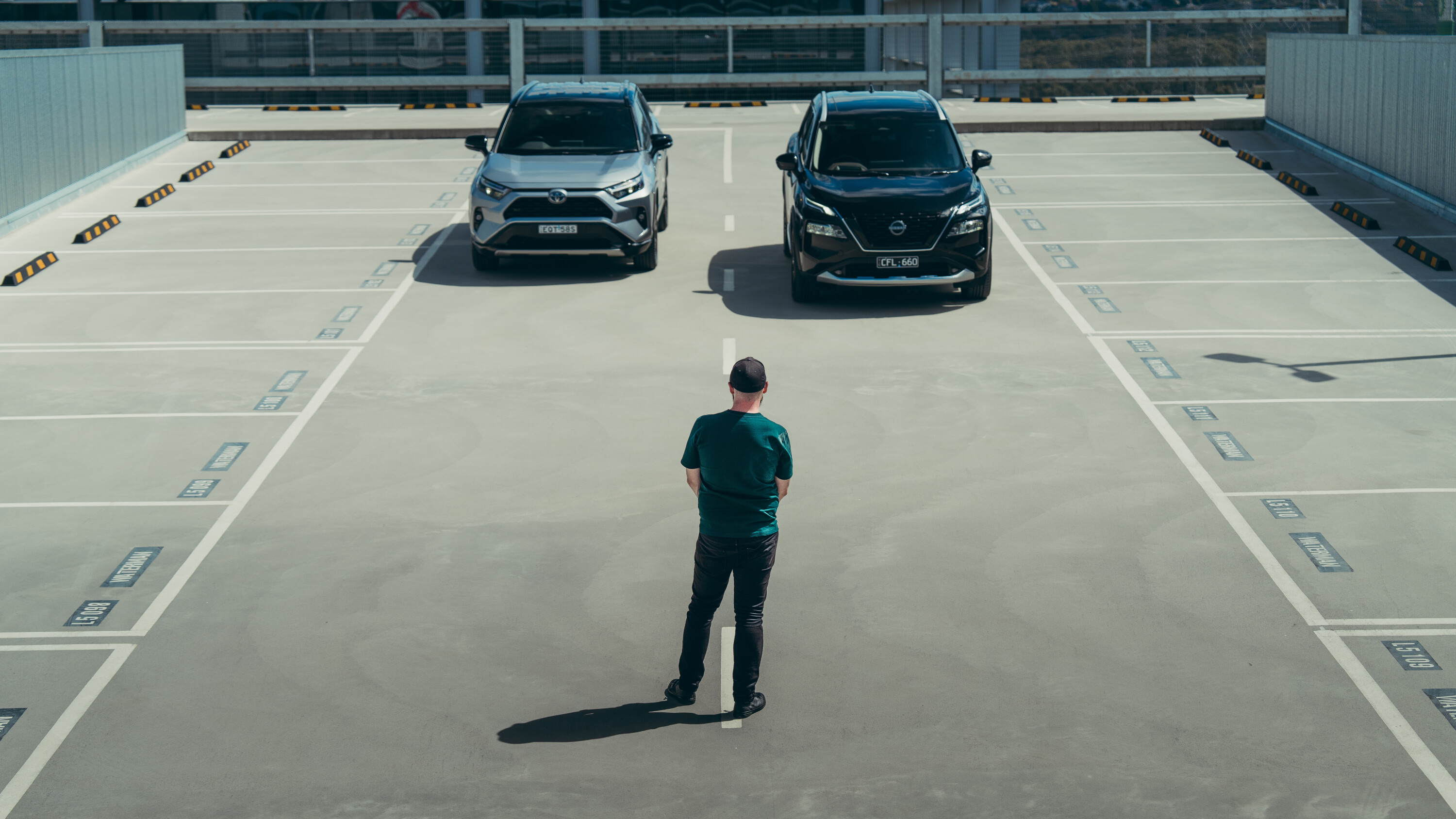
For the last decade or so, hybridisation has had a lot to do with the RAV4’s success – but now, there’s a new generation X-Trail offering the same thing. And in a more clever way, argues Nissan.
While the RAV4 hybrid’s petrol engine still powers the wheels, Nissan has copied Tesla in making a vehicle powered exclusively by electric motors. It’s just that, instead of fitting a giant battery you plug into a power socket – hopefully fed by green energy – they’ve fitted a teeny-tiny battery needing to be almost constantly recharged by an engine with a petrol tank.
The dual electric motors – one front, one rear – give the X-Trail E-Power all-wheel-drive and a combined power output of 157kW. Under the bonnet, a 1.5-litre three-cylinder turbo-petrol engine switches on and off purely as a generator for the tiny battery, which in turn powers the electric motors.

As the battery is so small at just 2.1kWh – most electric cars are more like 60kWh – the petrol engine is kicking in and out constantly to keep it topped up.
Much of the X-Trail E-Power’s general concept has been inspired by the world of electric cars and, indeed, Nissan’s marketing team has sprinkled some electric vehicle fairy dust on its new hybrid SUV.
But don’t be misled, it’s still ‘just’ a hybrid powered by coral reef-killing hydrocarbons. Better, to be sure, than a purely internal combustion powered car, but it’s not even a plug-in hybrid like its closely related (and pricier) Mitsubishi Outlander cousin.

Toyota, meanwhile, offers both front- and all-wheel-drive hybrid RAV4s. While today we’re testing a front-drive hybrid (transparency: it was what Toyota could make available), the all-wheel drive versions with triple electric motors and 163kW are more comparable to the X-Trail E-Power.
Unlike the X-Trail E-Power, the RAV4’s 2.5-litre inline-four can recharge the small 1.5kWh battery but also directly drive the wheels as needed.
A clash of engineering philosophies, yes, but at the end of the day it’s all about whose approach uses the least fuel. Later we’ll reveal the answer.
Many customers will be drawn to the new Nissan simply because wait times for the RAV4 hybrid, as of March 2023, are ludicrously long. And, as we’re about to find out, even if there wasn’t a wait for the RAV4 you’d still be rightly tempted by the hybrid X-Trail.
JUMP AHEAD
- How much is it, and what do you get?
- Comfort and space
- On the road
- Safety
- Fuel efficiency
- Ownership
- VERDICT
- Specifications
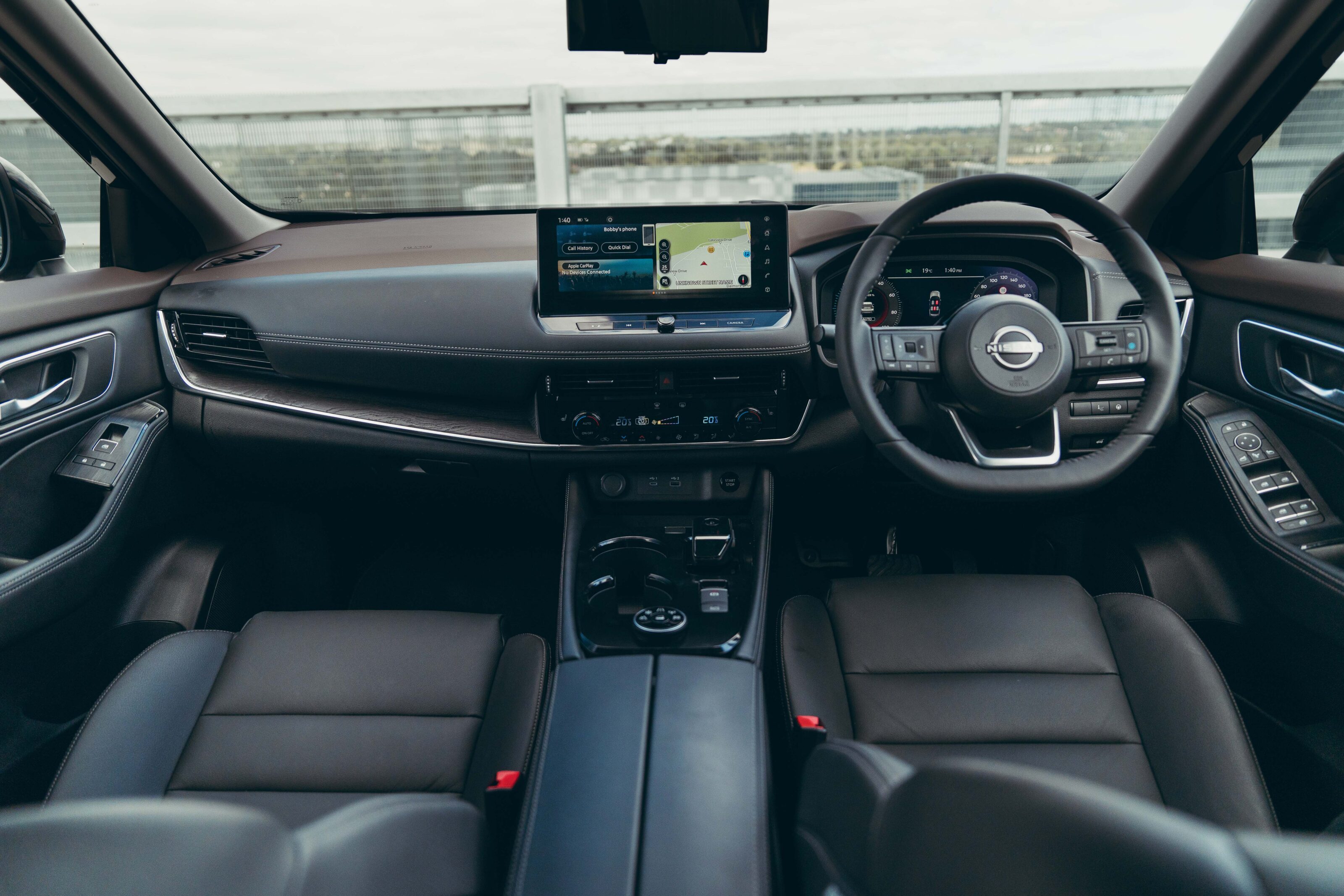
Pricing and features
In terms of what you get for your money, the Nissan is a better deal.
Our X-Trail E-Power test car is the $54,190 (before on-road costs) Ti. Our RAV4 is an XSE 2.5 hybrid FWD which is $45,700 before on-road costs. The Edge 2.5 hybrid AWD would have been more directly comparable to the X-Trail E-Power Ti at $55,150, but since they’re sold out for about two years, this one was gonna have to do.
Both cars are richly equipped, but comparing RAV4 Edge to X-Trail E-Power Ti, for about $1000 less than the Edge, trumps Toyota’s standard kit list with a head-up display, video rear-vision mirror (which takes some getting used to, but is better than a normal mirror), larger 12.3-inch central infotainment screen (versus the RAV’s 10.5-inch) and a panoramic sunroof versus the moonroof of the RAV4. And, as you’ll read below, a much cleverer rear seat design.
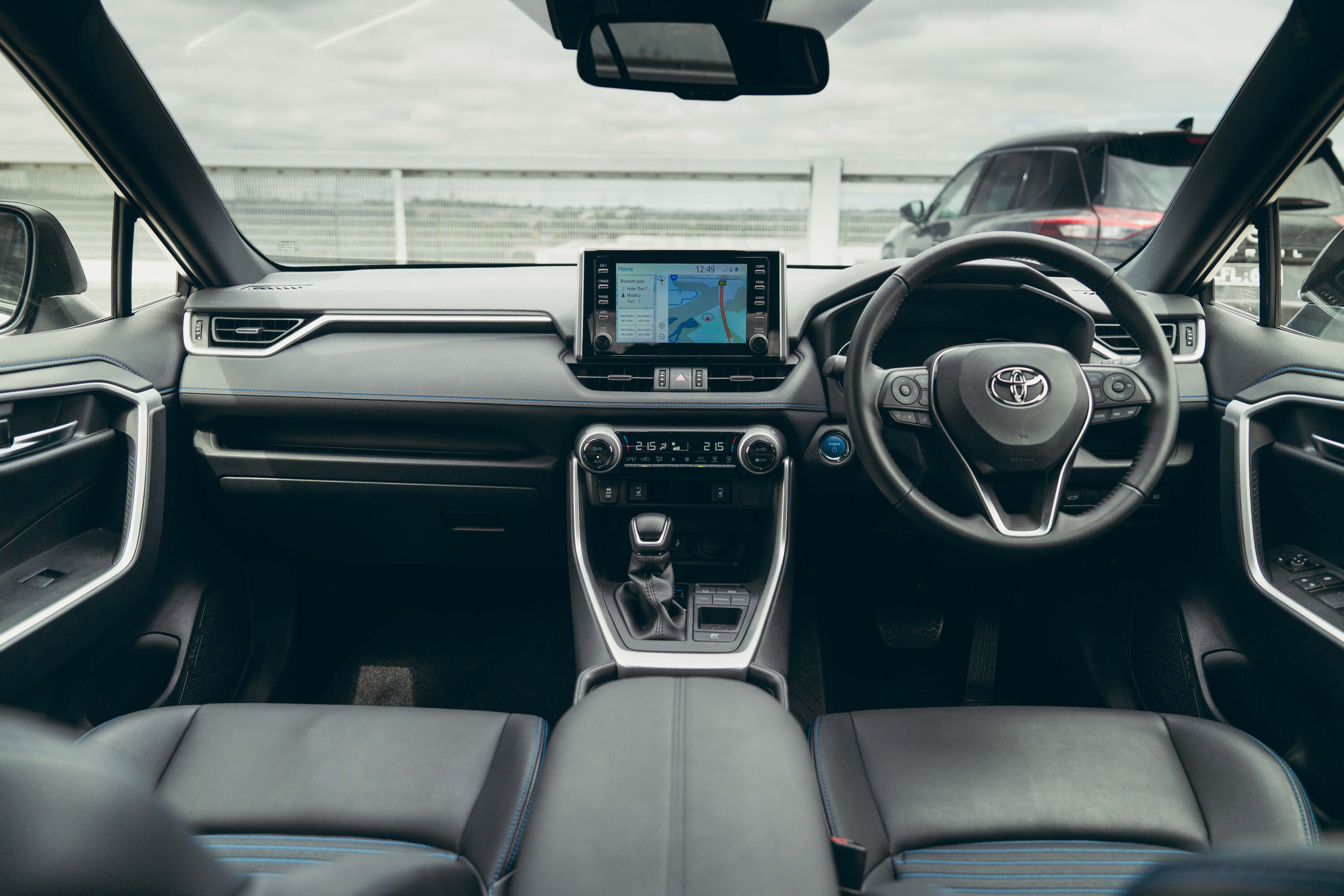
Both cars use semi-autonomous cruise control with active lane-keeping. The X-Trail gets Nissan’s latest ProPilot+ cruise control, which will steer itself down the motorway hands-free for up to nine seconds. The RAV4 will do the same for up to nine seconds.
Wireless phone charging pads are standard in both, as is wireless Apple CarPlay – but only wired Android Auto.
Comfort and space
Both cars are lovely places to sit, but if the RAV4 is a pair of Redback boots, the X-Trail is more like RM Williams. It’s just lovelier.
The interior of our X-Trail E-Power Ti felt almost Infiniti- or Lexus-like with its faux woodgrain veneer, leather and piano black plastics – not to mention generously sized digital displays with smart, high-resolution graphics.
By comparison, our RAV4 XSE felt more rugged and basic, like you could hose it out. There’s less of a sense that you have to ‘take your shoes off’ as engendered by the slightly fancy X-Trail, while the digital displays are smaller, seem lower in resolution and about 20 years old for their graphic designs (to be fair, the infotainment graphics are about to be updated to something much smarter for the MY23 RAV4).


The X-Trail’s back seat is also much cleverer than the RAV4’s.
Mounted on rails, the entire second row can be shifted fore and aft to give either greater rear-seat legroom, more boot space, or whatever balance between both you need. In comparison, the RAV4’s is fixed – like it’s 1998.
Infinite tilt adjustment on the X-Trail’s second-row backrest also means you can recline it back a bit and have a snooze, if you want.
The new X-Trail also offers its rear-seat occupants more amenities. Both get centre armrests with cup holders but whereas the X-Trail offers map lights for each outer rear-seat occupant, tri-zone air-conditioning, and USB-A and USB-C outlets, the RAV4 only has a map pocket behind the passenger seat (none behind the driver), a single rear ceiling dome light, mere flow control for its two rear AC vents, and offers only two USB-A outlets.
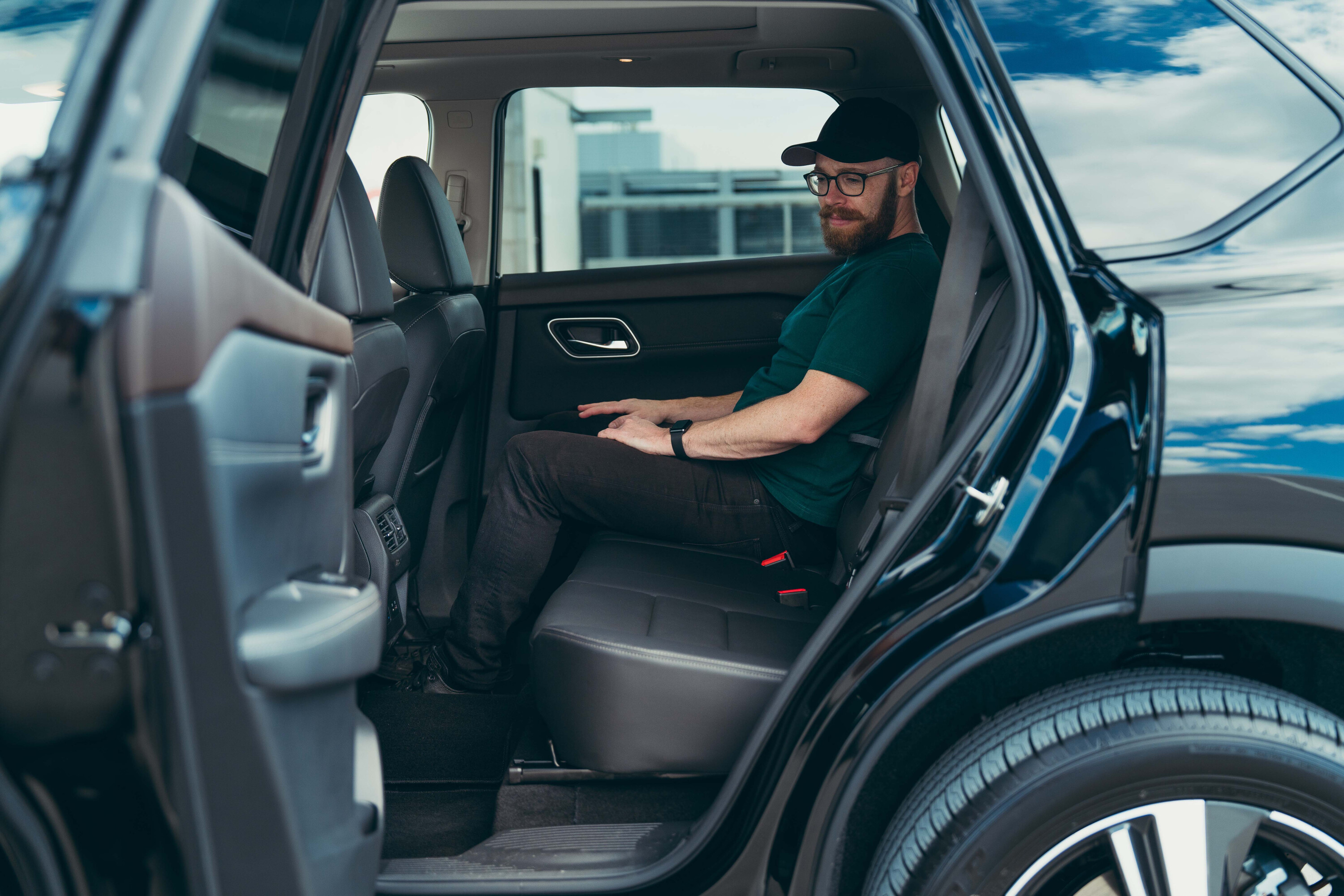

Also standard on the X-Trail are built-in rear window shades, like an expensive European vehicle, whereas the RAV4 does not.
The X-Trail’s doors also open much wider than the RAV4’s thanks to clever hinges. The rear doors open almost 90 degrees, giving incredibly easy access to the rear seats.
This is an underrated thing when wrestling with a writhing three-year-old. The RAV4’s open about 60-70 degrees and still grant easy access, just not as generous as the X-Trail.
Boot space: X-Trail E-Power v Toyota RAV4 Hybrid
Both boots are about the same size, the X-Trail’s 575 litres versus the RAV4’s 580L.
Both feature 60:40 split-fold rear seats, with the X-Trail gaining a few extra points for having a pass-through ‘ski port’ in the rear backrest, where the middle seat folds down.
Each of our test cars had electronic opening and closing tailgates, while neither offered rear-seat folding releases at the back of the boot (meaning you have to lean in to release them and fold them down).
The RAV4 features a space-saver spare wheel (size T165/80D17 104M) whereas the X-Trail uses an arguably inferior puncture repair kit. Something to keep in mind if you regularly drive long distances to the middle of nowhere.
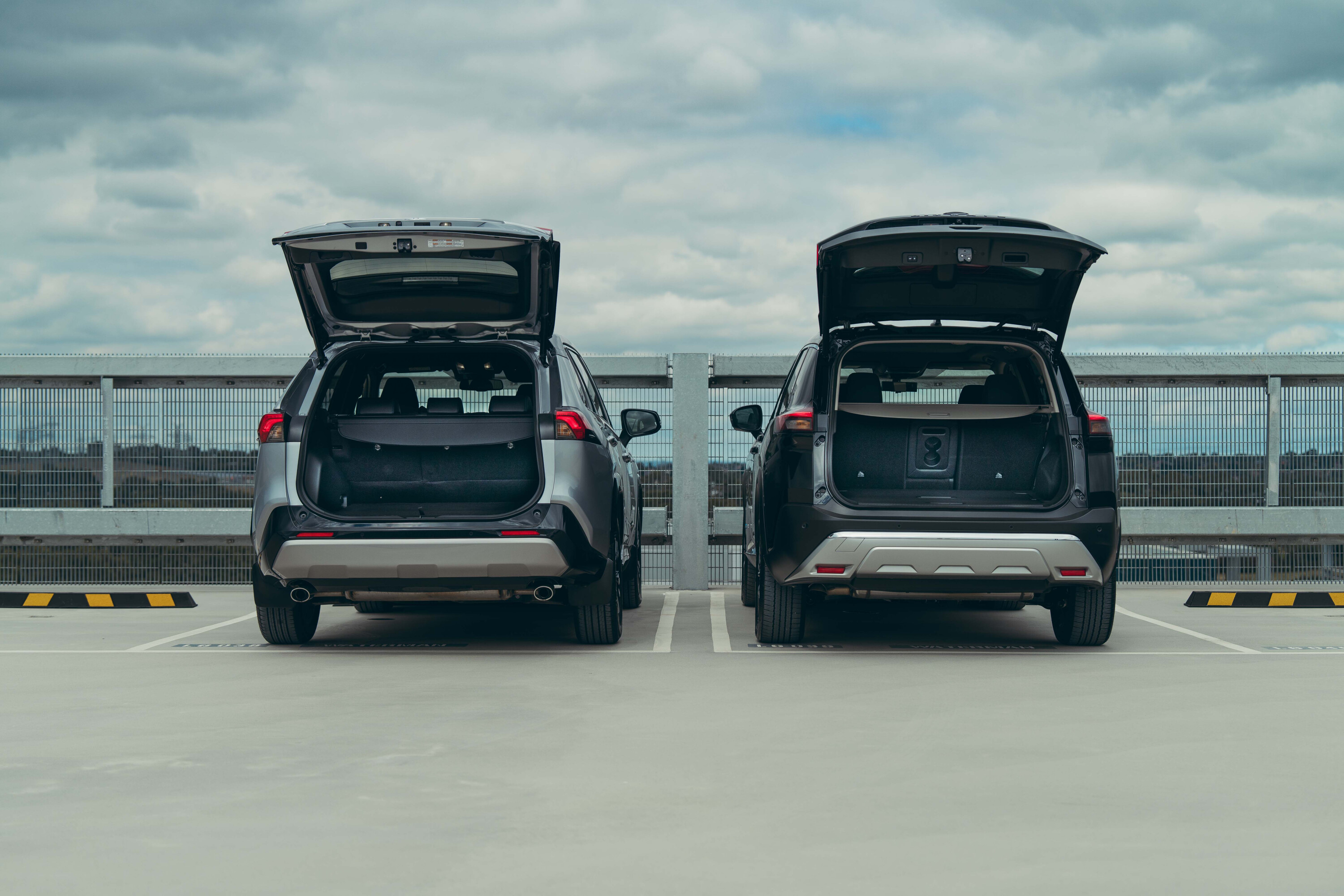
On the road
With slightly better forward visibility, the RAV4 also feels a bit smaller and narrower – and it’s just a nice, easy car to drive. The X-Trail is also a breeze, but feels slightly larger.
Despite their very different hybrid configurations, both cars operate similarly at urban speeds (below about 80km/h), motoring about using their smooth, punchy electric motors, engines quietly switching on and off in the background.
But it’s the X-Trail whose engine is a little bit quieter and kicks in less noticeably, and better insulates occupants from general road noise. In fact, it makes the RAV4 feel a bit noisy, even crude, like it has much less sound deadening. The X-Trail is the more refined car.
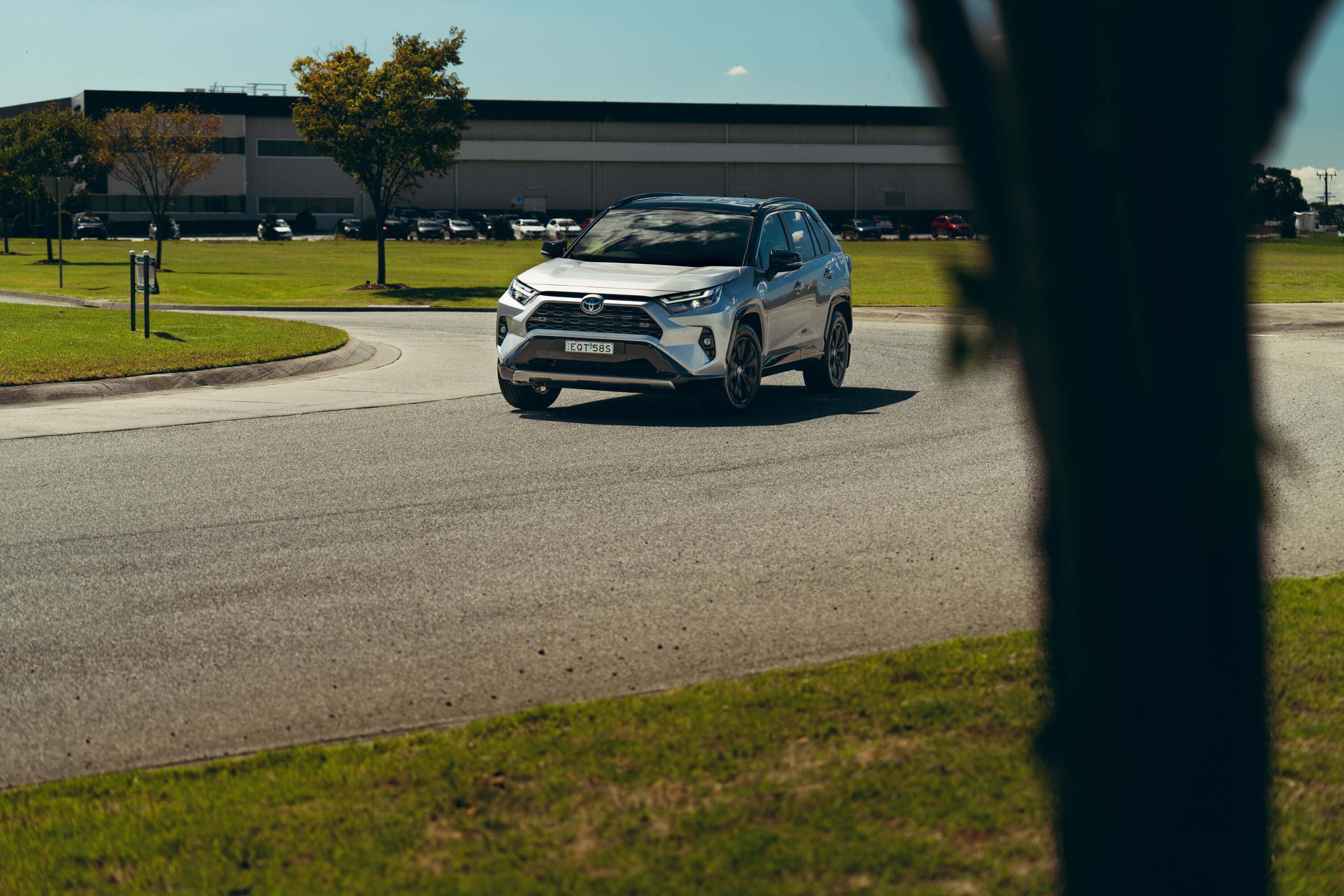
With its larger and more powerful electric motors, the X-Trail’s acceleration feels a lot punchier from a standstill. We love the instant torque of its electric motors. Nissan claims 0-100km/h in 7.0 seconds. We got 7.6 seconds to 100km/h in our own testing.
Crucially, it feels a lot faster and its 0-50km/h speed would be up there with some sports cars. The acceleration quickly starts tapering after about 50km/h as the electric motors run out of puff shifting 1903kg of Nissan SUV.
The RAV4 offers the same feeling, but not as strongly – at least in the 2WD hybrid guise of our test car. The AWD hybrid, with its large additional rear electric motor, would accelerate more like the X-Trail E-Power. In 2WD hybrid guise its engine has to kick in and help power the wheels sooner as its electric motors simply aren’t as grunty. A Toyota RAV4 hybrid with all-wheel drive does 0-100km/h in about 8.3 seconds.
With its larger and more powerful electric motors, the X-Trail’s acceleration feels a lot punchier from a standstill.
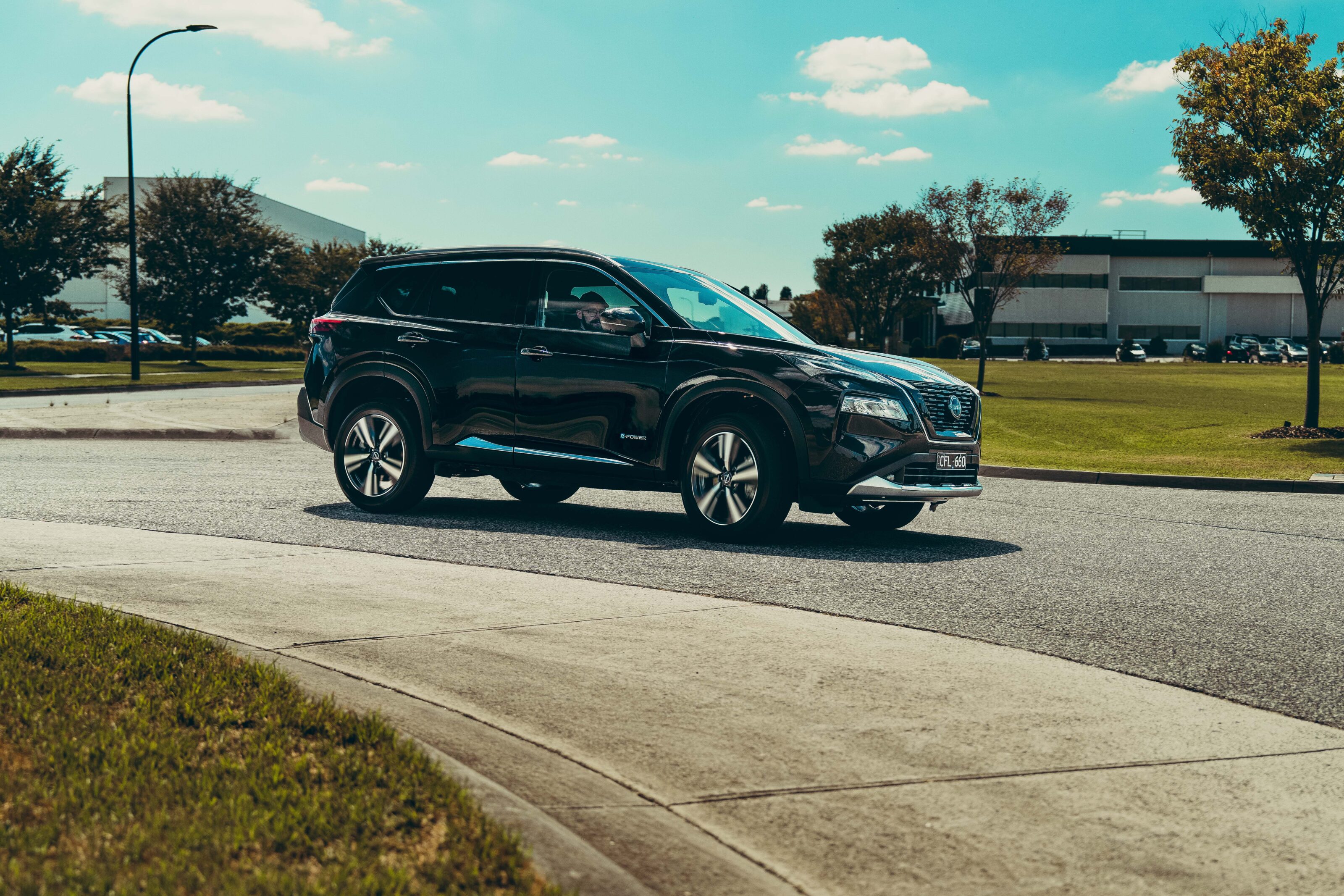
Both offer dedicated “EV modes”, but only if the small onboard batteries are topped up – which can only be done via driving. The RAV4 2WD hybrid can do “up to 1km” on electric power alone, although you can’t accelerate very fast and your top speed is limited by the power of the electric motors.
The X-Trail can accelerate harder and motor on electric power at a higher top speed, and can go a little bit further in its “EV mode” thanks to its slightly larger 2.1kWh battery (versus 1.5kWh of the RAV4). In other tests, we’ve managed to go around 4km on battery power alone. But at 100km/h on flat ground, the E-Power’s petrol engine is humming away (noticeably) to keep the small battery constantly topped up. It may as well be a petrol-powered car.
At low speeds, where it typically motors about electrically – and silently – with its engine off, the X-Trail emits a sort of futuristic droning sound from an external speaker to warn pedestrians it’s about to run them over. The RAV4, which also spends most of its time at low speeds in electric-only mode, doesn’t.
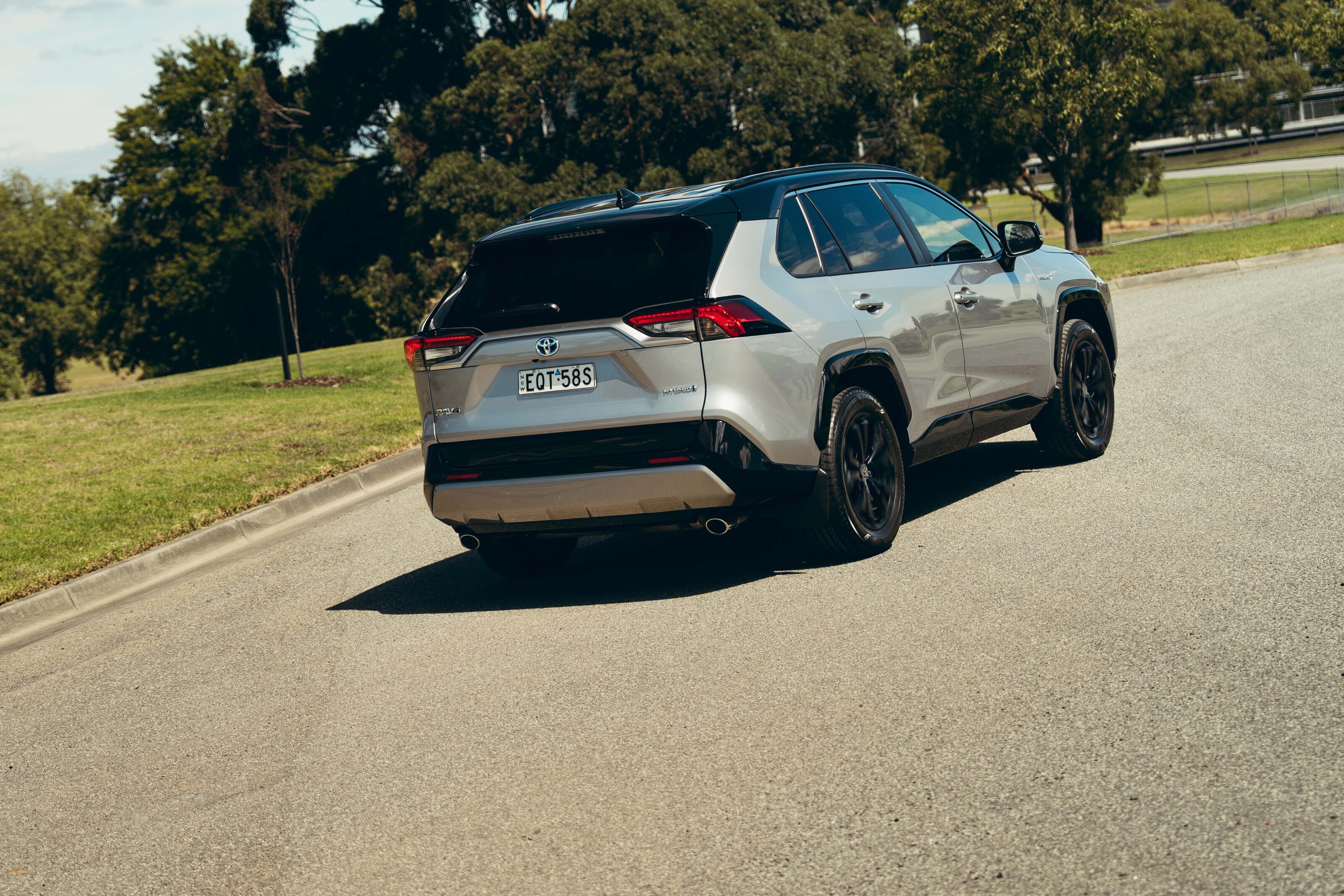
Like many new electric cars, the X-Trail E-Power offers a ‘one-pedal’ drive mode.
As you come off the accelerator, it starts braking automatically and you can feel the brake pedal depressing under your foot all by itself. It’s a bit weird to experience this in a hybrid vehicle (as opposed to an EV) and we gladly switched it back off.
The softly-sprung RAV4 had comfier ride quality, especially our XSE on chubby 225/60 R18 tyres. The X-Trail also rides nicely but is a bit unexpectedly jarring over road joins and other harsh bumps, as if it’s got large wheels and very low profile tyres – but it doesn’t really, they’re 235/50 R19s.
Over sharp bumps, the X-Trail’s ride quality is sometimes harsh enough that you almost wince slightly. Adaptive dampers would elevate the ride quality to match the premium interior. Or fitting smaller wheels and higher profile tyres.
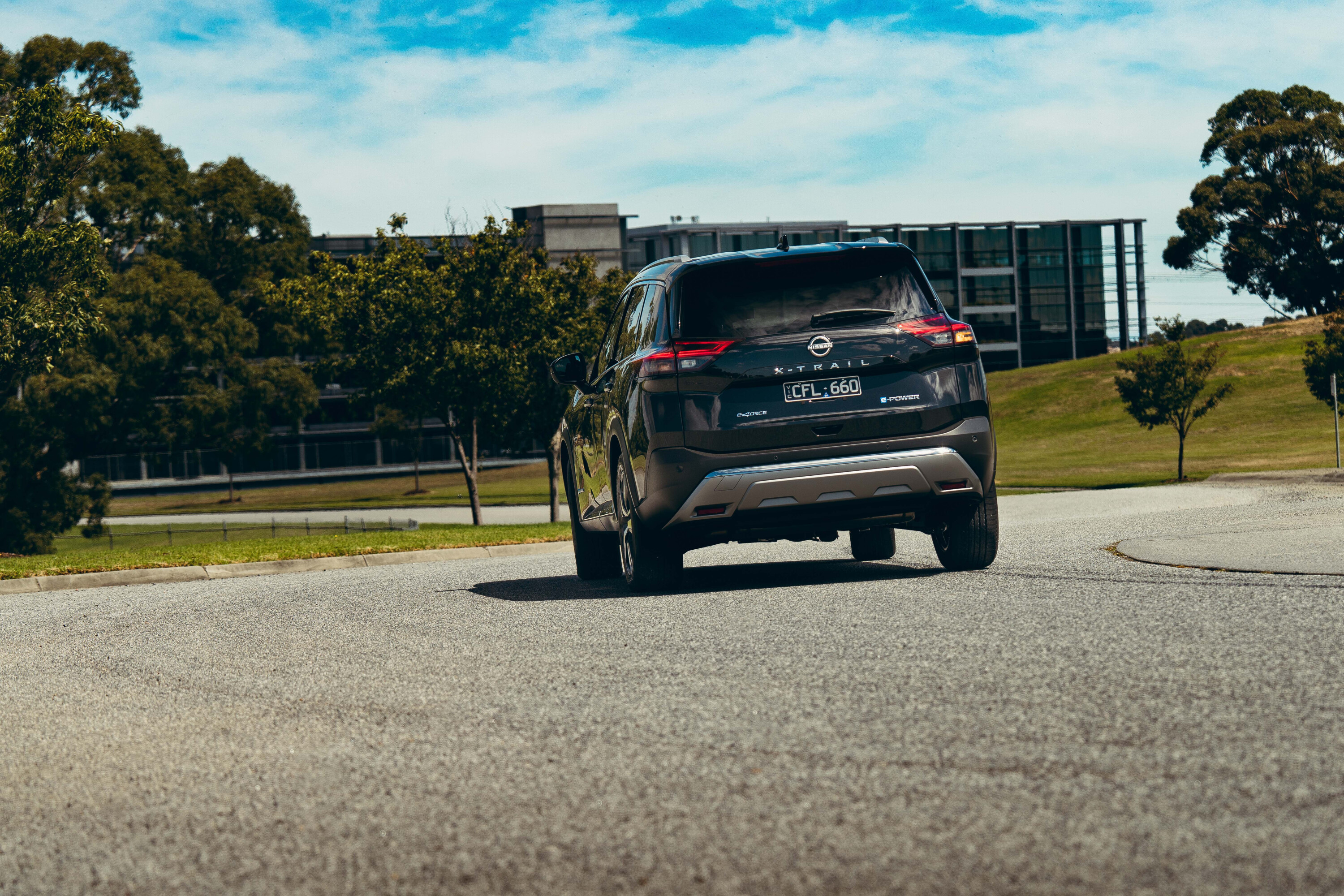
If you love driving and had to sell your sports car to get an SUV, you can stop reading – because the RAV4 is your winner of this test.
There’s a surprising verve and sparkle about its dynamics, like the engineers that made it had a lot of fun. Find yourself on a twisty road and it eggs you on to go a bit faster, and kiss the (relatively low) limits of the tyres; it loves being driven hard.
All the controls feel beautifully weighted and uncorrupted, like a GR86. By comparison, the X-Trail is also an enthusiastic and competent handler, but only up until about ‘eight-tenths’ where it starts getting a bit flustered and unhappy, and isn’t much fun.
That could partly be because of the grades we tested. At 1690kg the RAV4 Hybrid XSE 2WD does weigh 213kg less than the X-Trail E-Power Ti. At 1760kg, a RAV4 Edge hybrid AWD is closer to the E-Power Ti’s 1903kg.
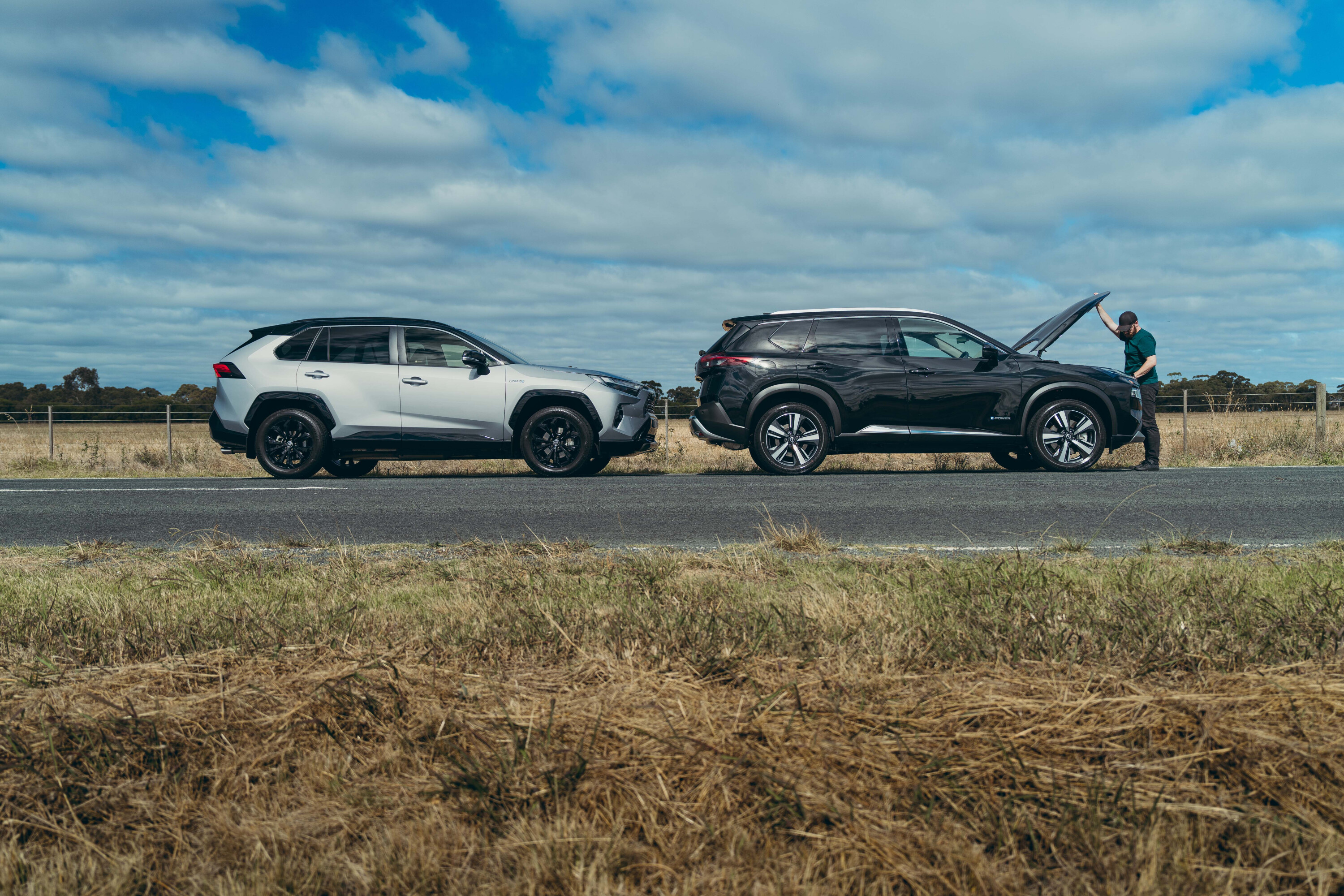
Safety
Both cars scored five stars when crash tested by the independent Australasian New Car Assessment Program (ANCAP). The RAV4 was tested in 2019 and the X-Trail 2021.
There are no notable safety omissions with either vehicle, both offering all the modern safety features you could desire.
One minor concern we had is with the X-Trail E-Power’s electronic stability control (ESC). We tested this vehicle at Wheels Car of the Year and found the ESC too ‘loose’. It was surprising as all other Nissan models we tested, including other X-Trail variants, had excellent ESC systems.
Fuel efficiency
Many of you will skip ahead to this bit, and the verdict is in: the E-Power simply uses more petrol than the RAV4 hybrid.
But only by a bit.
Nissan claims 6.1L/100km for the X-Trail E-Power on the combined cycle and Toyota’s equivalent figures are 4.7L/100km for the RAV4 hybrid 2WD and 4.8L/100km for the AWD.
Based on our testing, owners can expect to get roughly 6.0L/100km during everyday driving in the X-Trail E-Power and about 5.7L/100km in the RAV4.
Depending on driving styles and how flat or hilly the area you live is, your mileage may vary, as they say.
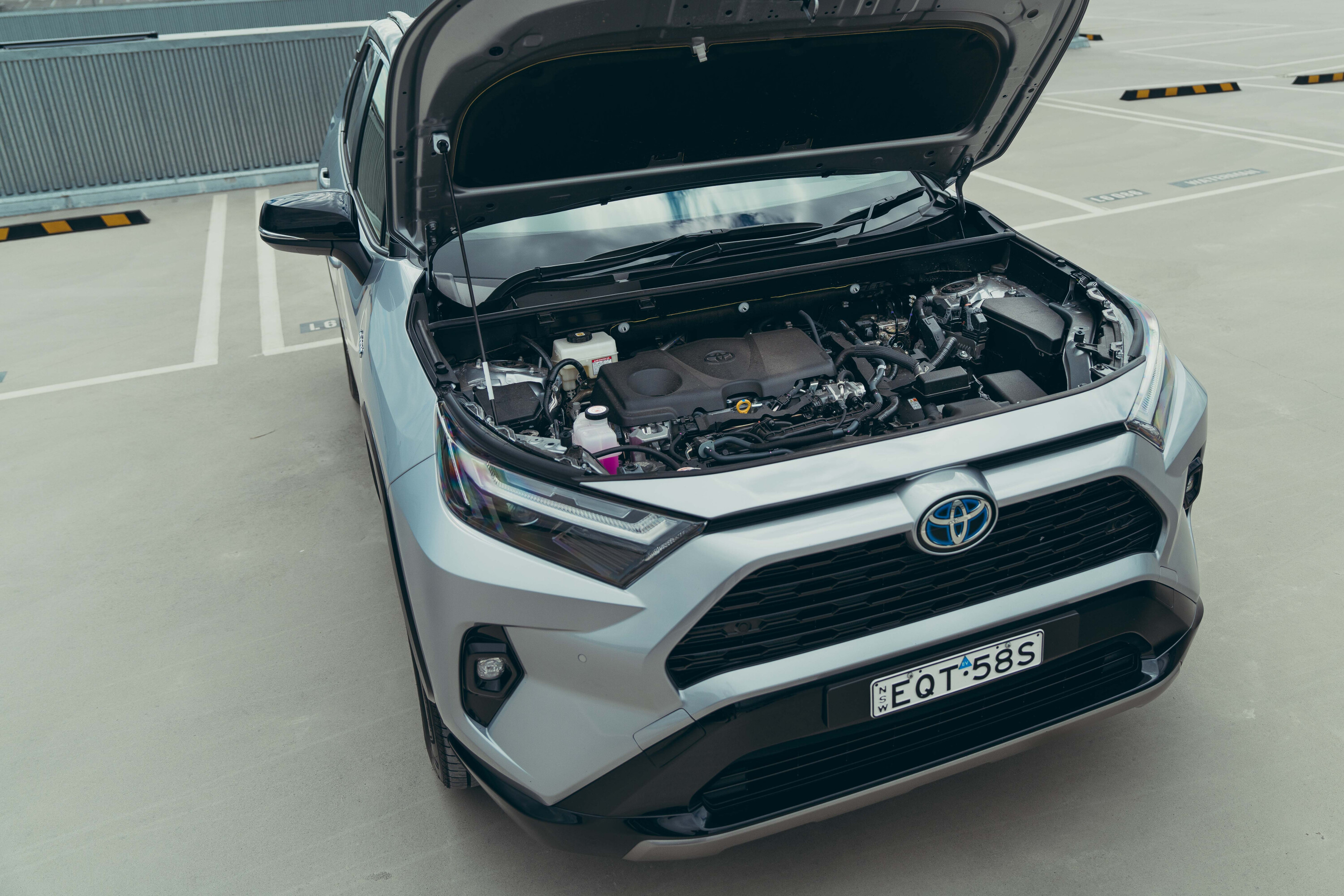
One trip across Melbourne in traffic, with a mix of motorway and urban driving, yielded 3.9L/100km for the RAV4 and 4.1L/100km for the X-Trail.
The E-Power might yield slightly better efficiency in a hilly area where its 2.1kWh battery can scavenge more energy down hills, compared to the RAV4’s smaller 1.5kWh unit.
Toyota recommends 91 RON for the RAV4 and while the E-Power can run on the same with “reduced performance”, Nissan recommends more expensive 95 RON premium unleaded.
Extra points go to the X-Trail for having an externally openable fuel filler flap, like a European car. You just press on the flap and it pops open, so you don’t have to remember to press a button in the interior – unlike the RAV4.
Both cars have 55-litre fuel tanks.
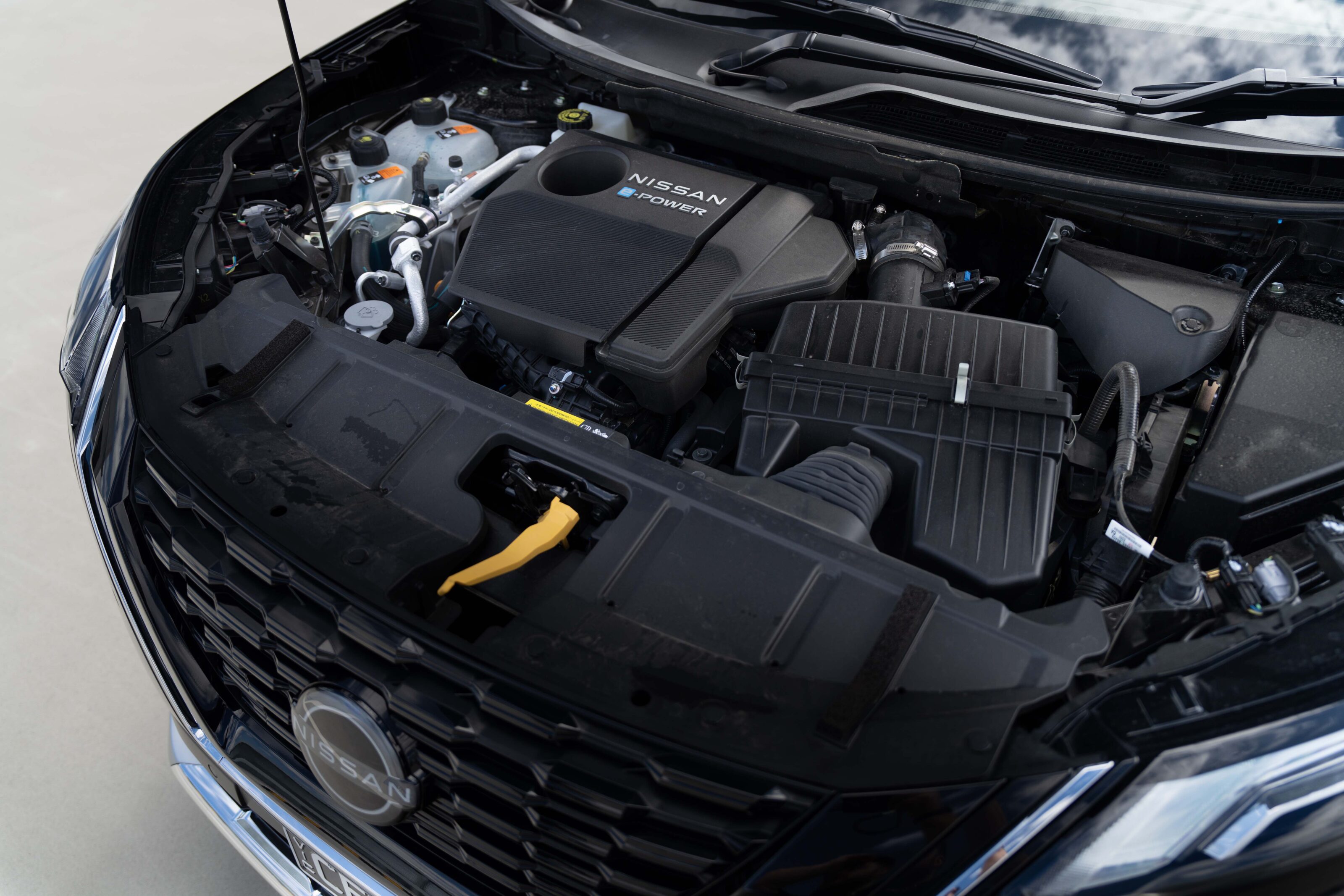
Ownership
Toyota offers the better ownership deal over five years.
A RAV4 comes with a five-year, unlimited-kilometre warranty – with an additional two years for the engine and driveline provided you service it with Toyota, – and a 10-year warranty on the hybrid battery. Toyota also covers hire car and towing costs for up to seven years, if some sort of warrantable defect puts your car out of order.
The RAV4 hybrid requires servicing every 12 months or 15,000km. Toyota caps the servicing price at $260 for the first five services, for a total five-year servicing cost of just $1300. That’s very sharp.
Nissan also offers the X-Trail with a five-year, unlimited-kilometre warranty. You also get five years of standard roadside assistance thrown in.
The X-Trail E-Power requires servicing every 12 months or 10,000km. Over five years it costs $2353 to service – quite a bit more than the RAV4 hybrid.
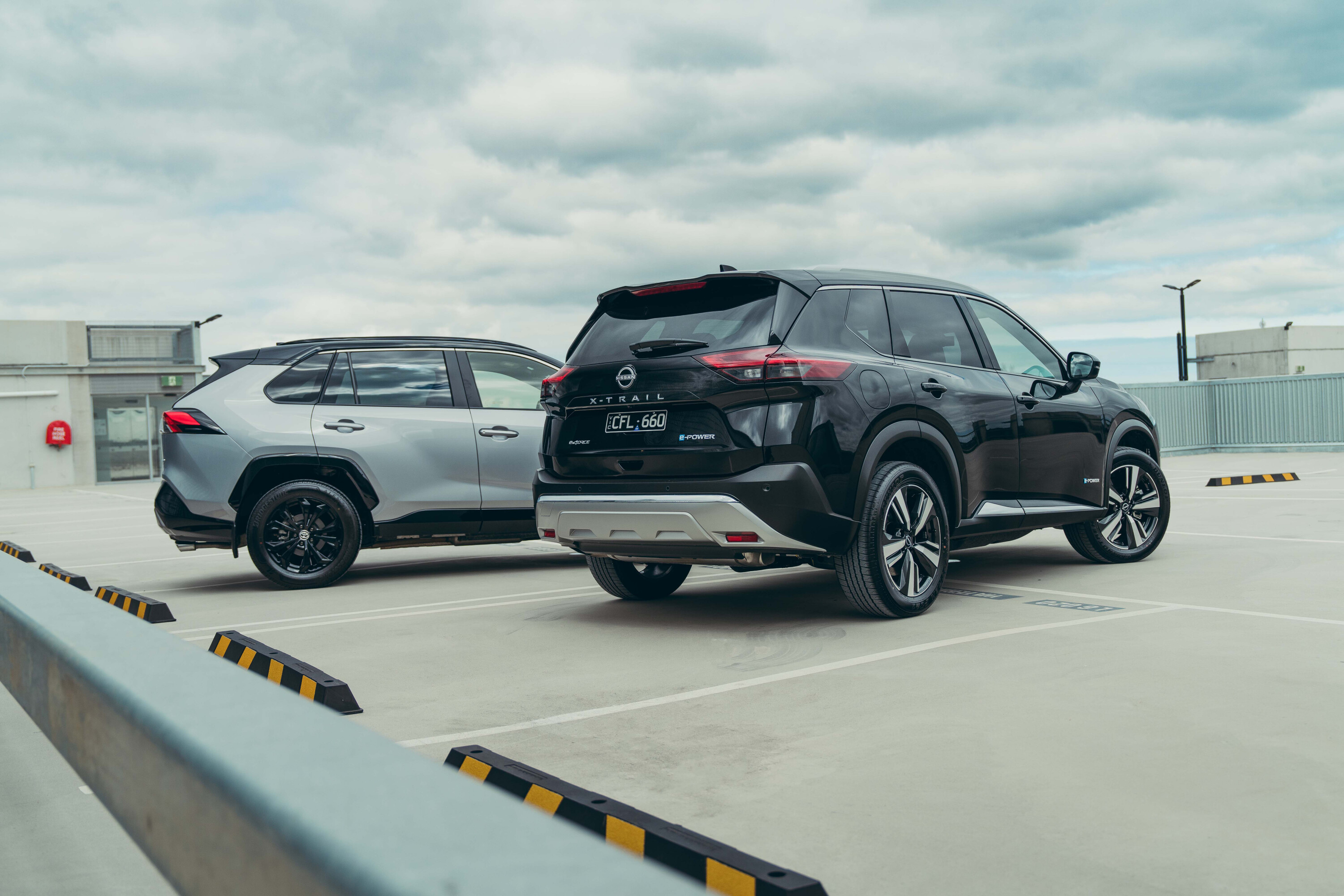
One major ownership advantage the X-Trail E-Power offers over the RAV4 Hybrid is – as of March 2023 when this article was published – you can simply own it a lot sooner.
One Nissan dealer told us they could get customers into an X-Trail E-Power “next month” if they didn’t care much for the colour or trim; while others reported “July-August”, “a couple of months”, “May” and “six or seven months for a ‘build-to-order’ vehicle”.
“We’ve had a lot of RAV4 customers give up,” said one Nissan salesperson, who had recently sold four X-Trail E-Powers in one day. Some were purchased by would-be RAV4 owners who got tired of waiting and cancelled their orders.

“We’ve had a lot of RAV4 customers give up,” said one Nissan salesperson
When we asked about wait times for a RAV4 Edge hybrid, we got laughed at by one Toyota salesperson in Victoria: “At least three years; Edge is the longest wait”.
Multiple other dealers reported “18 to 24 months” for any hybrid model and “24 months plus” for Cruiser AWDs, which are the most popular. One salesperson said America was hoovering up global RAV4 availability, impacting Australia. “What we sell in a year, they sell in a month in America,” he said.
Two salespeople independent of each other said GX trim level was the quickest way into hybrid RAV4 ownership with wait times more like “eight months” or “nine to 12 months”.
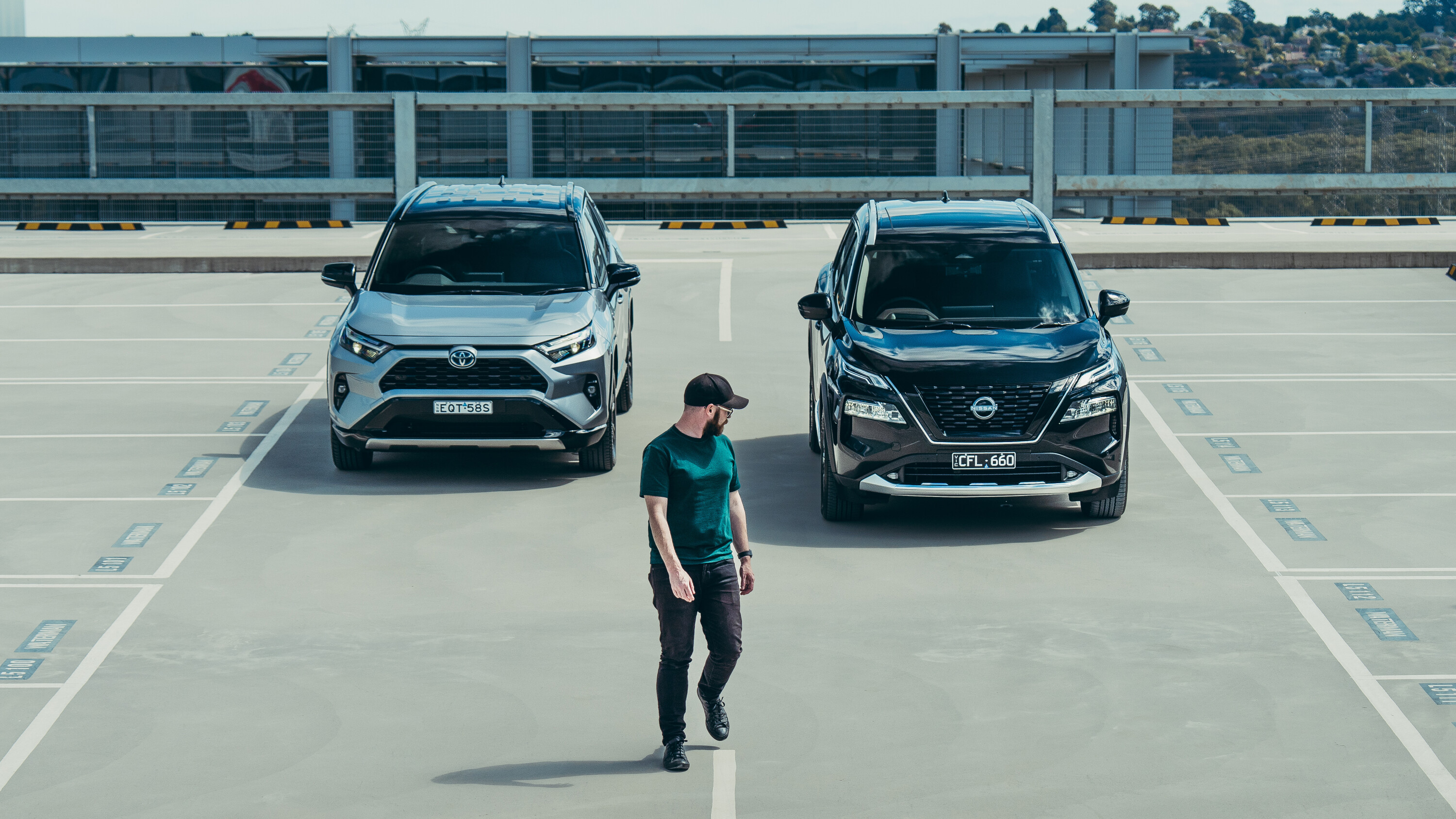
VERDICT
? The new X-Trail E-Power is our winner.
Its interior is much nicer, the rear seat more clever, it’s a quieter and more refined car and we enjoy the extra punch from the larger electric motors. It’s also slightly better value.
We enjoy its hybrid concept more than Toyota’s. It feels like an electric car – one that has an engine constantly humming away. But it’s a fairly quiet engine and, being three cylinders, almost sounds kind of good when you can hear it. Boot the X-Trail E-Power up a freeway on-ramp and the engine kicks in so aggressively – and loudly – it may as well just be a petrol-powered car.
If this was an AFL match, it would be X-Trail beating the reigning premiership winners RAV4 in the very first round – an upset, no doubt. Whether that will translate to a grand final win in the sales race is another matter, of course.
That all said, the RAV4 is a close second in this test. The handling is more fun, its ride quality is better and it’s cheaper to run. In isolation, it’s an outstanding vehicle and it’s not hard to see why there’s a queue around the corner to get one.
SCORING
Nissan X-Trail e-Power: 8.5/10
Things we like
- Lovely interior
- Punchy acceleration
- Refinement
- Clever rear seats
Not so much
- Could be more efficient
- Running costs
- Imperfect ride quality
Toyota RAV4 Hybrid: 8/10
Things we like
- Still the hybrid efficiency king
- Excellent dynamics
- Cheap to service
Not so much…
- Basic interior
- Lower refinement
- The wait time is how long?
SCORING BREAKDOWN
| Nissan X-Trail E-Power | Toyota RAV4 hybrid | |
|---|---|---|
| Safety, value and features | 8.5 | 8 |
| Comfort and space | 9.5 | 8.5 |
| Engine and gearbox | 8.5 | 8 |
| Ride and handling | 8 | 9 |
| Technology | 8 | 7.5 |
| OVERALL | 8.5 | 8 |
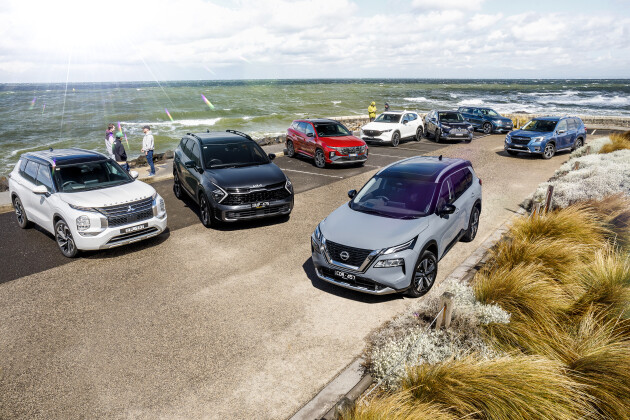
Medium SUV comparison: 2023 Mega Test
Thinking of buying a new mid-size SUV this year? We test eight of the best and most popular contenders to see where you should spend your money
Things we like
- X-TRAIL: Lovely interior, punchy acceleration, refinement, clever rear seats
- RAV4: Still the hybrid efficiency king, excellent dynamics, cheap to service
Not so much
- X-TRAIL: could be more efficient, running costs, imperfect ride quality
- RAV4: Basic interior, lower refinement, and... the wait time is how long?
We recommend
-
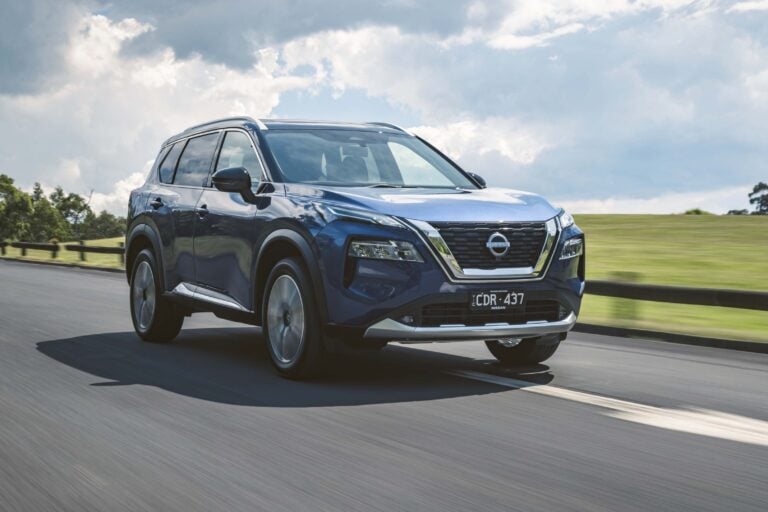 News
News2023 Nissan X-Trail pricing and features
The all-new X-Trail has arrived with four model grades, a host of safety features, and available hybrid power
-
 News
News2023 Toyota RAV4 pricing and features
The updated Toyota RAV4 medium SUV has arrived in Australia with new technology and improved specification – but with price rises of up to $2820
-
 News
NewsNew car calendar 2026: All the new cars coming to Australia next year
Here’s the WhichCar by Wheels guide to all the new cars that will launch in Australia in 2026. Check back in regularly for updates...



